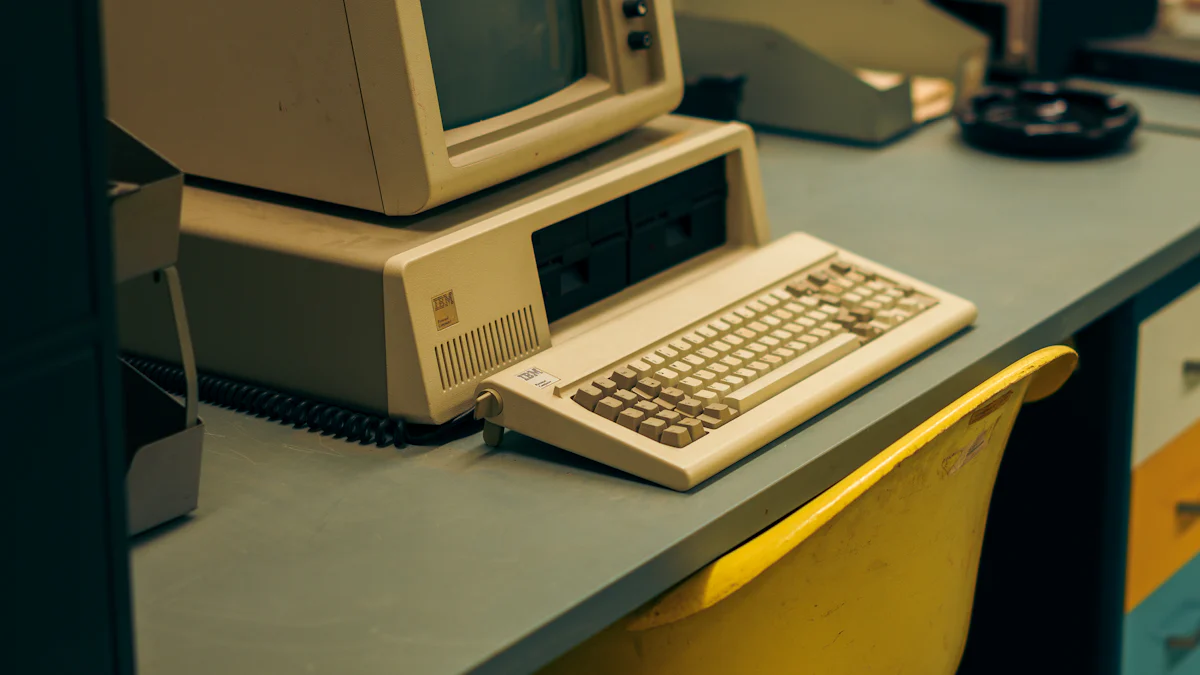The Untold Story of the First Computer Bug
The Untold Story of the First Computer Bug and How We Fix Them Today
Computer bugs have become an inevitable part of the digital age. Understanding the history of these pesky glitches reveals much about their evolution and impact. The untold story of the first computer bug, discovered in 1947, offers a fascinating glimpse into the early days of computing. Imagine a team of scientists finding a moth causing issues with the Harvard Mark II computer. This incident not only coined the term "debugging" but also set the stage for modern bug-fixing techniques.
The Untold Story of the First Computer Bug
The Historical Context
Early Days of Computing
The early days of computing marked a period of groundbreaking innovation. Engineers and scientists worked tirelessly to develop machines capable of performing complex calculations. These pioneers laid the foundation for modern computing. The Harvard Mark II, an electromechanical computer, represented one of these early marvels. This machine used relays and switches to process information.
Key Figures in Early Computing
Several key figures played pivotal roles in the development of early computers. Grace Hopper, a pioneering computer scientist, contributed significantly to the field. Hopper's work on the Harvard Mark II and other projects showcased her expertise. Other notable figures included Howard Aiken, who led the development of the Harvard Mark series. These individuals pushed the boundaries of technology, paving the way for future advancements.
The Incident
Discovery of the First Bug
On September 9, 1947, a team of engineers encountered an unexpected issue with the Harvard Mark II. The machine malfunctioned, prompting an investigation. Upon closer examination, the team discovered a moth trapped in one of the computer's relays. This incident marked the first recorded instance of a computer bug. The term "bug" had been used informally to describe mechanical flaws, but this event gave it a new context in computing.
The Famous Moth in the Relay
The moth found in the relay became a symbol of the challenges faced by early computer scientists. The team carefully removed the insect and taped it into the logbook. This documentation provided a tangible record of the incident. The phrase "debugging" emerged from this event, highlighting the process of identifying and fixing issues in computer systems. The story of the moth in the relay remains a fascinating chapter in the untold story of computing.
Immediate Reactions and Documentation
Grace Hopper's Role
Grace Hopper played a crucial role in documenting the first computer bug. Hopper's meticulous record-keeping ensured that the incident would not be forgotten. Her logbook entry detailed the discovery of the moth and the subsequent resolution. Hopper's contributions extended beyond this single event, as she continued to shape the field of computer science through her innovative work.
The Logbook Entry
The logbook entry from September 9, 1947, stands as a testament to the early challenges of computing. The entry included the taped moth and a note describing the incident. This documentation provided valuable insights into the troubleshooting process. The logbook entry also highlighted the importance of thorough record-keeping in scientific endeavors. The untold story of the first computer bug offers a glimpse into the perseverance and ingenuity of early computer scientists.
Evolution of Debugging Techniques
Early Methods
Manual Debugging
In the early days of computing, engineers relied heavily on manual debugging. Engineers meticulously examined hardware components to identify issues. This process demanded a high level of expertise and patience. Engineers often used trial and error to resolve problems. Manual debugging required a deep understanding of the machine's architecture.
Use of Logbooks and Journals
Logbooks and journals played a crucial role in early debugging efforts. Engineers documented every step of the troubleshooting process. These records provided valuable insights into recurring issues. The documentation helped future engineers understand past problems. Logbooks served as an essential tool for knowledge transfer.
Advancements in Technology
Introduction of Debugging Tools
The introduction of debugging tools marked a significant advancement. Engineers developed specialized instruments to aid in problem-solving. These tools allowed for more efficient identification of issues. Debugging tools reduced the time required to fix bugs. The evolution of these tools represented a major leap forward.
Software-Based Debugging
Software-based debugging emerged as computers became more complex. Engineers created programs to automate the debugging process. These programs analyzed code to identify errors. Software-based debugging increased accuracy and efficiency. This method revolutionized the way engineers approached problem-solving.
Modern Debugging Practices
Integrated Development Environments (IDEs)
Integrated Development Environments (IDEs) have become indispensable in modern debugging. IDEs offer a comprehensive suite of tools for developers. These environments streamline the coding and debugging process. IDEs provide real-time feedback on code quality. The use of IDEs has significantly improved productivity.
Automated Debugging Tools
Automated debugging tools represent the cutting edge of modern practices. These tools leverage advanced algorithms to detect issues. Automated systems can identify and fix bugs with minimal human intervention. The use of automation has transformed the debugging landscape. Engineers now rely on these tools to maintain high-quality software.
How We Fix Bugs Today
Current Technologies
Machine Learning and AI in Debugging
Machine learning and artificial intelligence (AI) have revolutionized debugging. These technologies analyze vast amounts of data to identify patterns and anomalies. Engineers use machine learning algorithms to predict potential bugs before they cause issues. AI systems can automatically suggest fixes based on historical data. This approach significantly reduces the time required to debug complex software.
Various Experts in software development emphasize, "Debugging is a crucial aspect of software engineering, aimed at identifying and fixing bugs in software systems. It ensures improved system quality, reduced downtime, increased user satisfaction, reduced development costs, increased security, and facilitates system changes and testing."
Real-Time Monitoring and Alerts
Real-time monitoring tools provide continuous oversight of software systems. These tools detect issues as they occur, allowing for immediate intervention. Engineers set up alerts to notify them of any irregularities. Real-time monitoring ensures that problems are addressed promptly, minimizing downtime. This proactive approach enhances overall system stability.
Best Practices
Code Reviews and Pair Programming
Code reviews involve multiple engineers examining code for potential issues. This collaborative process helps identify bugs early in the development cycle. Pair programming takes this a step further by having two engineers work together on the same code. One writes the code while the other reviews it in real-time. Both practices improve code quality and reduce the likelihood of bugs.
Various Experts note, "Improves Software Quality: Debugging takes center stage in the general software quality. The job of the QA testers is to detect bugs and eliminate them. Hence, stability is improved, security is increased, improving overall efficiency."
Continuous Integration and Deployment (CI/CD)
Continuous Integration (CI) involves regularly merging code changes into a shared repository. Automated tests run on each integration to catch bugs early. Continuous Deployment (CD) extends this by automatically deploying code changes to production. CI/CD pipelines streamline the development process and ensure that bugs are identified and resolved quickly.
The Future of Debugging
Predictive Analysis
Predictive analysis uses data to forecast future issues. Engineers leverage historical data to predict where bugs might occur. This method allows for preemptive action, reducing the impact of potential problems. Predictive analysis represents a significant advancement in proactive debugging.
Self-Healing Systems
Self-healing systems automatically detect and fix issues without human intervention. These systems use AI to monitor software health and apply fixes as needed. Self-healing capabilities ensure continuous operation and reduce the need for manual debugging. This technology represents the future of robust and resilient software systems.
Various Experts highlight, "Debugging is an integral part of software development. While we often discuss general strategies to tackle issues, it’s essential to delve deeper into specific techniques that can enhance our debugging productivity."
The journey from the first computer bug to modern debugging techniques showcases the evolution of problem-solving in computing. Continuous improvement in debugging practices remains essential for maintaining software quality and user satisfaction. Staying updated with the latest debugging tools and technologies ensures efficiency and security. Embracing advancements in machine learning, AI, and real-time monitoring can revolutionize the debugging process. Debugging is not just a task but an ongoing learning process. The future of debugging holds exciting possibilities, encouraging every developer to strive for excellence.



Join the conversation